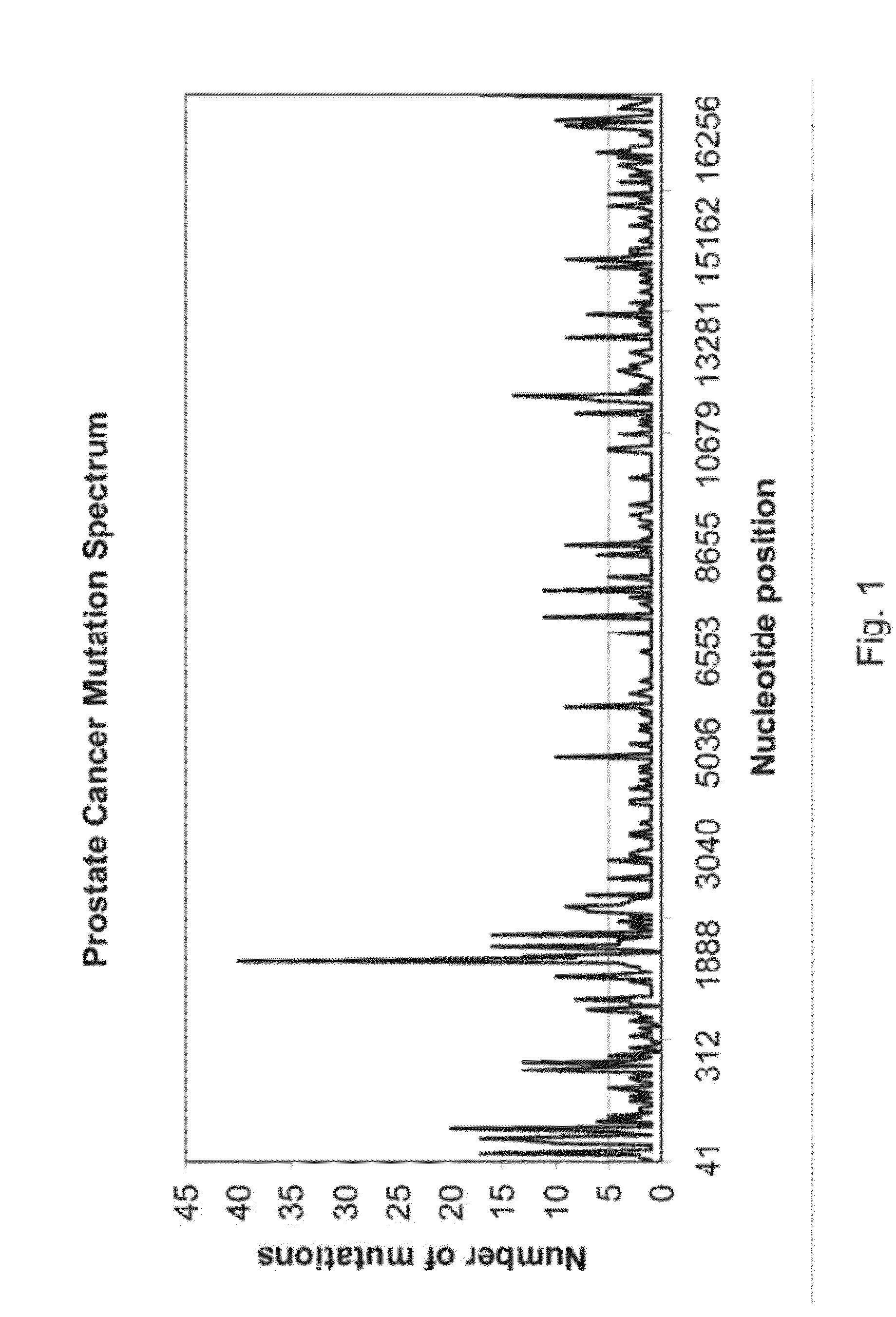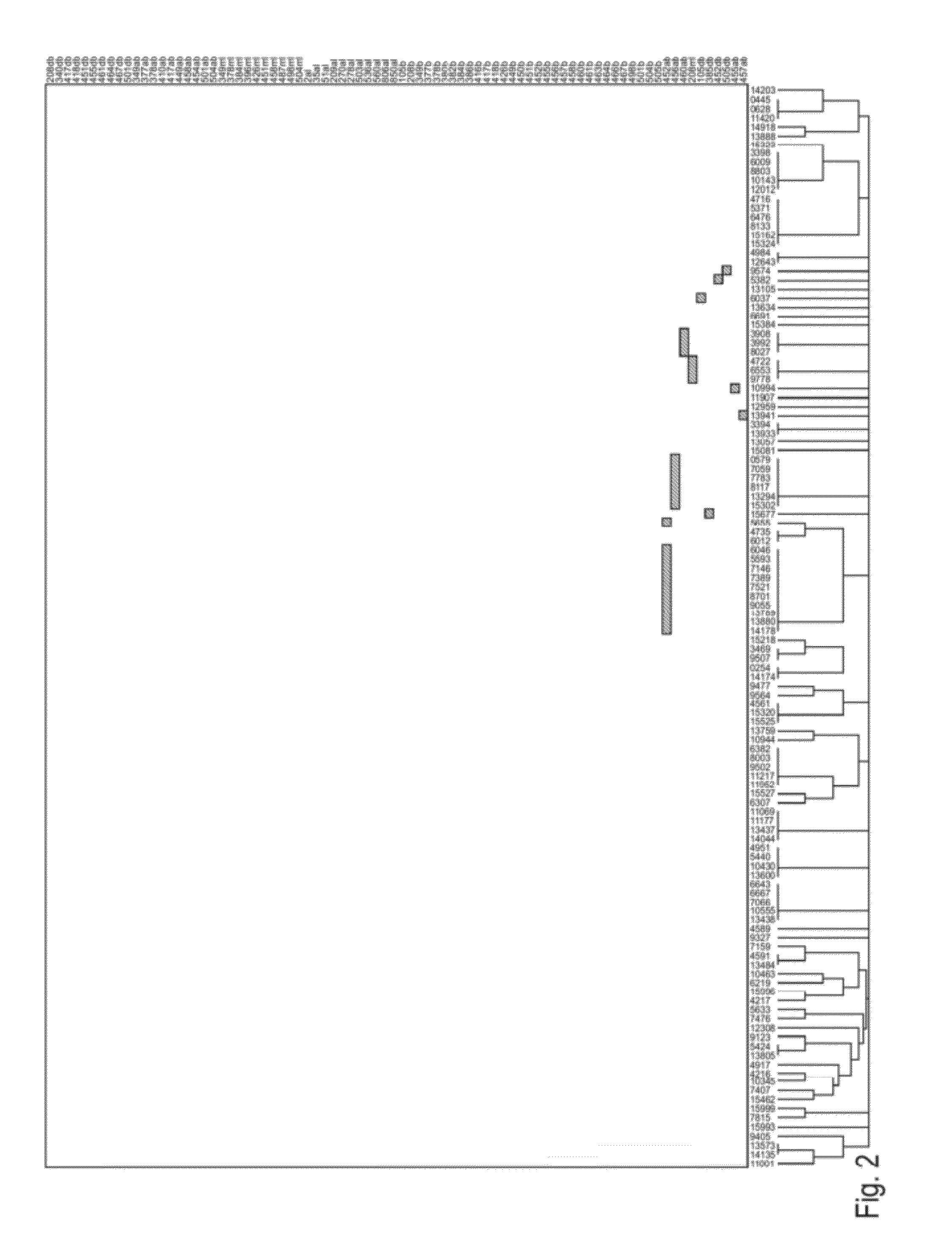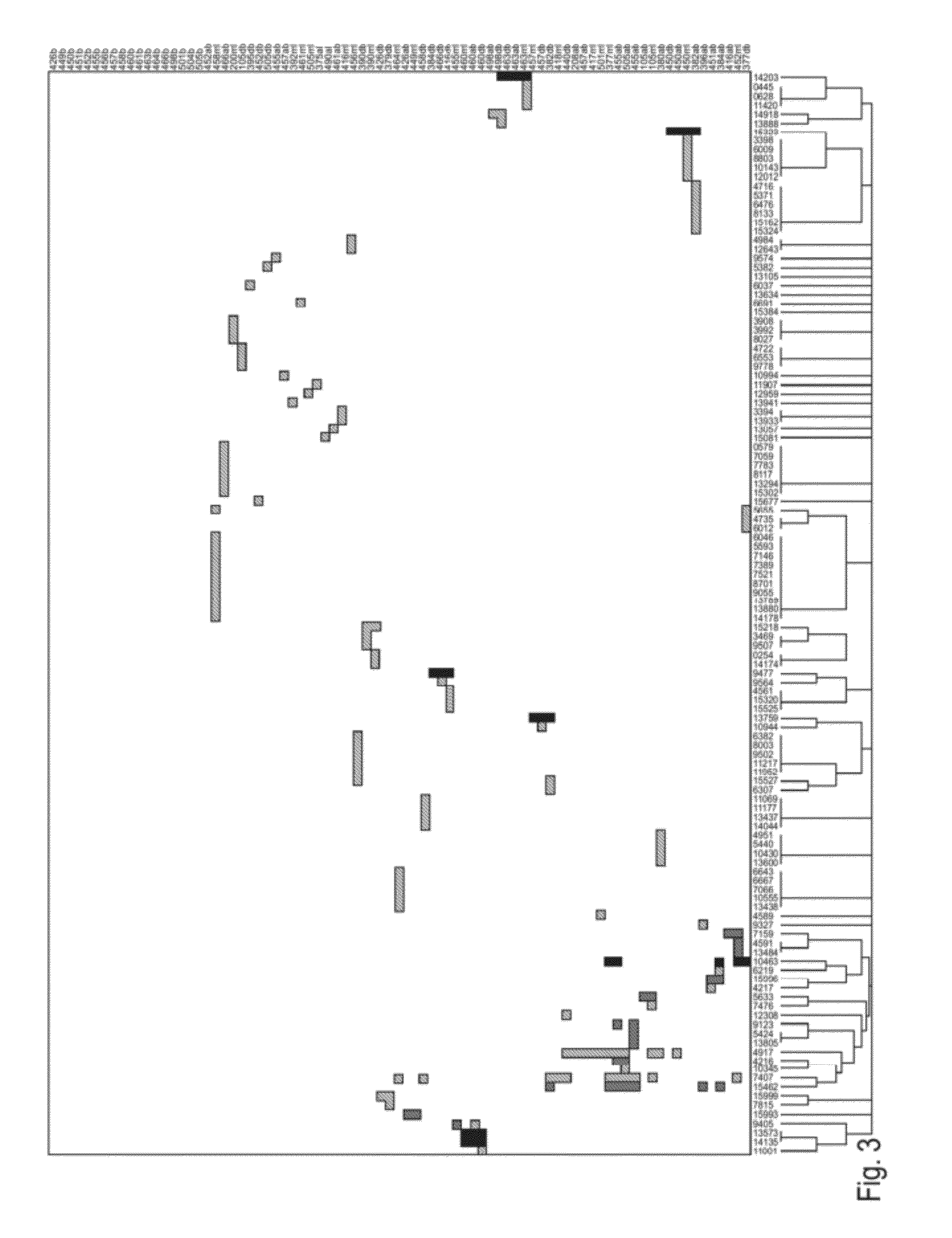Mitochondrial mutations and rearrangements as a diagnostic tool for the detection of sun exposure, prostate cancer and other cancers
a technology of mitochondrial mutations and rearrangements, applied in the field of mitochondrial genomics, can solve the problems of inability to apply on an individual basis, unusual limitation in the use and implementation of this information, and the staggering complexity of the human genome,
- Summary
- Abstract
- Description
- Claims
- Application Information
AI Technical Summary
Benefits of technology
Problems solved by technology
Method used
Image
Examples
example 1
Prostate Tumours
[0221]Following acquisition of prostate fluid or surgery to remove prostate tumours, biopsy slides are prepared to identify transforming or cancerous cells. Laser Capture Microdissection (LCM) microscopy is used to isolate cells that are either normal, benign, or malignant from the tissue section. Procurement of diseased cells of interest, such as precancerous cells or invading groups of cancer cells is possible from among the surrounding heterogeneous cells.
[0222]Total DNA extraction from each of these cells was purified according to a modification of the protocol outlined by Arcturus Engineering Inc. DNA was extracted from cells with a 50 μl volume of I mg / ml proteinase K (PK), in IOmM Tris pH 8.0, O.1 mM EDTA pH 8.0, and 0.1% Tween 20, at 42° C. overnight. Following incubation overnight at 42° C. the tubes were removed from the incubation oven. The samples were microcentrifuged for 5 min at 640O rpm (2000×g). The CapSure™ was removed from the tube and discarded. T...
example 2
Duplications in the Non-Coding Region of mtDNA from Sun-Exposed Skin
[0233]DNA was extracted from tissue samples as described in Example 1, with the use of DNeasy™ kit supplied by Qiagen. A “back to back” primer methodology was used to investigate the incidence of tandem duplications in the non-coding region (NCR) in relation to sun-exposure. 32 age-matched, split human skin samples, from sun-exposed (n=24) and sun-protected body sites (n=10) were investigated.
[0234]The following duplication primers from Brockington et al 1993 and Lee et al 1994 were used:
SEQ ID NO: 1CL336AAC ACA TCT CTG CCA AAC CC20 mer SEQ ID NO: 2DH335TAA GTG CTG TGG CCA GAA GC20 merSEQ ID NO: 3EL467CCC ATA CTA CTA ATC TCA TC20 merSEQ ID NO: 4FH466AGT GGG AGG GGA AAA TAA TG20 mer
[0235]Primers pairs C / D and E / F are ‘back to back’ at the site of two separate sets of direct repeats in the non-coding region. As a result they only generate a product if a duplication is present at these points. Products generated are 26...
example 3
Mutation Fingerprint of mtDNA in Human NMSC and its Precursor Lesions
[0237]DNA was extracted from human skin tissue samples as described in Example 1, with the use of DNeasy™ by Qiagen Using specific primers, mtDNA is amplified by PCR and following DNA sample preparation (Qiagen), mutations are identified by automated sequencing (PE Applied Biosystems) using BigDye™ Terminator Cycle sequencing. This methodology is described in Healy et al. 2000; Harding et al. 2000. The entire 16,569 bp human mitochondrial genome is sequenced using established PCR primer pairs, which are known not to amplify pseudogenes, or other nuclear loci. Any putative DNA changes are confirmed by comparison to the revised “Cambridge” human mtDNA reference (Andrews et al. 1999). The sequences obtained from the tumour mtDNA are first compared for known polymorphisms (Andrews et al. 1999; MITOMAP) and then compared with the mtDNA sequence from the normal perilesional skin to identify genuine somatic mutations.
[023...
PUM
 Login to View More
Login to View More Abstract
Description
Claims
Application Information
 Login to View More
Login to View More - R&D
- Intellectual Property
- Life Sciences
- Materials
- Tech Scout
- Unparalleled Data Quality
- Higher Quality Content
- 60% Fewer Hallucinations
Browse by: Latest US Patents, China's latest patents, Technical Efficacy Thesaurus, Application Domain, Technology Topic, Popular Technical Reports.
© 2025 PatSnap. All rights reserved.Legal|Privacy policy|Modern Slavery Act Transparency Statement|Sitemap|About US| Contact US: help@patsnap.com



